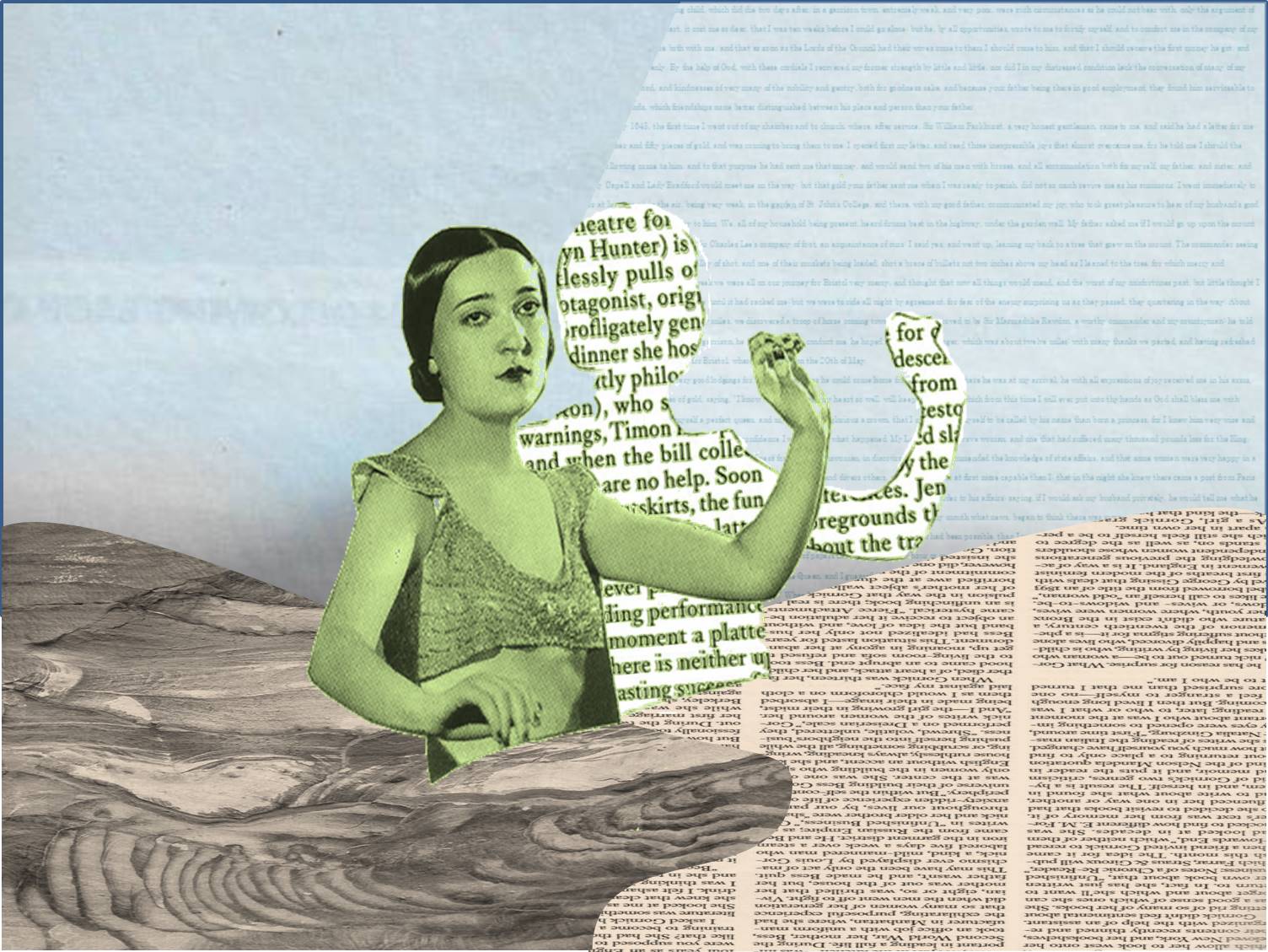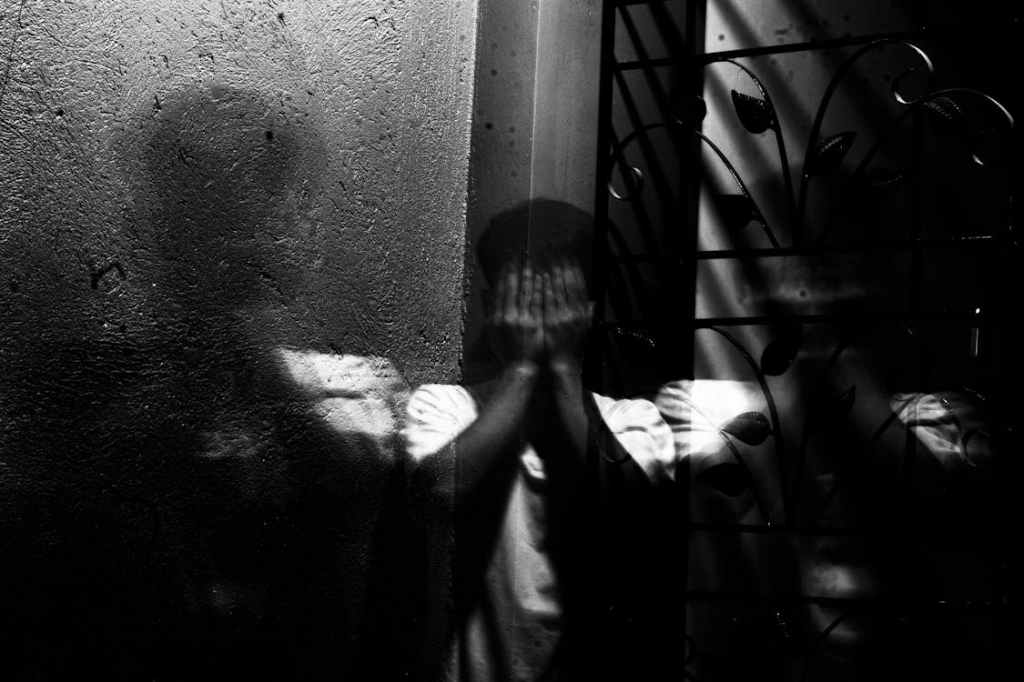I sit on a low chair in a small, dimly lit room. A candle burns behind me. In front of me stands a long rectangular mirror. I am seated at an angle to the mirror so that I don’t see my own image.
As I’ve been instructed to do, I think about family members who are now dead. My father, who died when I was a child before I really got to know him. My mother, with whom I had a tumultuous relationship. My grandmother, whose long, excruciating ordeal with cancer cast a heavy haze over my early life. A few aunts who played their roles in our family drama. A man I dated a few years ago, who died suddenly of a heart attack. I didn’t get to say good-bye or tell him how much he meant to me.
The twilit room becomes dream-like. I feel sleepy, as if I’ve been drugged. Reality’s grip loosens. What Dr. Moody promised seems possible.
The mirror’s surface dissolves, pulling my gaze into the realm its image reveals.
I wait.
Something happens in the mirror. An outline at first, then a cloudy image. Then, slowly, a face appears.
. . . . . . .
My Aunt Susie was what people in our small town called a card-carrying New Ager.
In Cumberland, Maryland, many folks demonstrated their allegiance to mainstream conservative Christianity by attending services at one of the local Catholic or Protestant churches. Others attended one of the synagogues.
Meanwhile, Aunt Susie trekked off to yoga retreats, underwent past-life regression hypnosis, consulted her astrological chart, and studied the teachings of a long-dead guru known mysteriously as “the Tibetan.”
She believed in reincarnation. She believed that we live many lives—passing from life, to death, to life—as we work to resolve our karma and reach spiritual perfection.
One of nine children in a large eastern Appalachian family, she had twenty-four nieces and nephews. For reasons I’ll never understand, she singled me out from among them.
She claimed that she could see people’s auras. And mine, she said, was golden.
She saw to it that I was schooled in transcendental meditation and hatha yoga. And she provided an endless supply of books for me to read on the trendiest New Age subjects.
. . . . . . .
When I was sixteen, Aunt Susie gave me the book Life after Life.
In it, psychologist and philosopher Dr. Raymond Moody coined the term near-death experience to define the descriptions shared with him by people who had been pronounced clinically dead but had then recovered and survived. He offered his research as evidence that our consciousness survives our death and lives on in another realm.
Moody identified common elements of the experiences of those who have died and returned to life. The sensation of moving through a dark tunnel toward a bright light. Encounters with deceased loved ones or religious figures. A life review during which one sees the details of one’s life in rapid succession. A choice being offered: stay in the afterlife or return to life to realize one’s unfulfilled purpose.
“Don’t fear death,” Aunt Susie said as she handed me the book. “It is just a transition to another life. When we die, we go to a joyful, peaceful place.”
When her parents were on their deathbeds, she sat faithfully and kept watch at their bedsides. She spoke to them just above a whisper, reminding them over and over what they should expect as they transitioned from life to the afterlife. You’ll enter a tunnel. You’ll see a light, she promised. Follow the light. Trust the light.
As a teenager, I read and re-read Moody’s book. I listened to Aunt Susie, who was by then my spiritual mentor.
At that time, I embraced the idea of the afterlife that she envisioned without question.
. . . . . . .
A few days ago, I saw on display at my local library Raymond Moody’s new book, Proof of Life after Life: Seven Reasons to Believe There Is an Afterlife.
The word proof in the title jolted me.
Decades earlier, Moody defined near-death experiences as evidence of an afterlife, not proof. Now, the title suggested, he had found proof. What could he mean?
In this new book, he introduces a new term: the shared death experience. According to Moody, these are instances in which “a person’s death experience was somehow conveyed to a bystander who would then experience it.”
Moody and his co-writer Paul Perry claim that “to present proof of such a bold belief as consciousness surviving bodily death, the event would have to be witnessed by at least one other person,” a bystander who somehow shares in a dying or dead person’s experience.
Moody’s book provides accounts of such bystander experiences. Someone at a loved one’s deathbed observes the body of the dying person glowing supernaturally or sees a mist rise from the body at the moment of death. Someone who is unaware that a loved one is dying sees an apparition of the loved one and learns later that the vision occurred at the time the person died. A family member witnesses the appearance of a deceased family member at the loved one’s deathbed, as if the deceased person arrives to lead the dying person into the next life.
Those accounts are intriguing, but are they proof of an afterlife?
Hardly.
To make such a claim is nothing more than sloppy pseudo-science.
In the final chapter of Proof of Life after Life, Moody describes what he calls a psychomanteum. A space dedicated to the contemplation of and perhaps to communication with the deceased, it consists of a dimly lit room containing a mirror or other reflective surface. Grieving people are invited to sit in the room, gaze into the mirror, and wait for their departed loved ones to either appear in the mirror or in some other way make their presence known.
Moody admits that the psychomanteum experience may consist more of grief therapy than of actual communication with the dead. A grieving person sits in a quiet, darkened space thinking about the lost loved one. Perhaps the person achieves a hypnotic state that prompts an imagined encounter with the dead. Or perhaps the person simply sits for a while processing the grief and working toward emotional recovery.
The therapeutic benefit of this contemplation of the dead seems plausible. However, Moody offers the psychomanteum experiences described by grieving people as one of the Seven Reasons to Believe There Is an Afterlife. He presents them as one of his “proofs.”
Now, decades after Aunt Susie introduced me to Moody and his work, I can’t help but make greater demands on his research. I can’t help but question the reliance on people’s subjective experiences when gathered around a family member’s death bed, for instance, as evidence or proof of anything.
Over the years, my faith in Aunt Susie’s New Age philosophy has dried up and disintegrated into dust.
My golden aura has turned to brass.
I have earned degrees. I have been trained in the scientific method. I know that accounts of people’s experiences—people who may be overwhelmed by their loved one’s impending death and perhaps grief-stricken—can hardly be relied upon as proof of an afterlife.
Here is a case in point.
When she was eighty years old, Aunt Susie died unexpectedly alone in her home. After she died, several family members went to the mortuary to view her remains. I was not one of them, but I heard the various reports of what they observed.
A few said that she had died with a smile on her face. Some described her as looking joyful, expectant, at peace.
Others, however, reported that they saw pain reflected on her face. They saw an expression of suffering or of fear.
So, perhaps Aunt Susie passed through a tunnel, following a light. Perhaps she was met there by her deceased parents and siblings, who welcomed her and led her further into the light. Perhaps she entered an afterlife that was much as she had anticipated.
Or, perhaps her final moments were fraught with distress and discomfort. Perhaps she was frightened to be alone as she died.
The subjective reports of those who observed her remains leave questions.
. . . . . . .
Here in this twilit room, sleepiness overtakes me. I feel heavy, as if I’m being pressed down onto the chair on which I sit. The silence is overpowering.
The candle flickers, then rights itself.
The image in the mirror grows blurry. The face that seemed to emerge out of the grayness fades, reappears, then fades again.
I catch glimpses, but only for a second at a time.
Then, the face is gone.
. . . . . . .
Death is the most sensitive of subjects. I approach it with utmost respect for the emotions and beliefs of anyone who is reading this.
I would never question anyone’s report of what happened during such a critical event as a loved one’s death. I would never doubt a person who describes such an experience.
I believe in the value of anecdotal evidence. But to offer it as proof—of anything? No.
I believe in an afterlife. I believe primarily because I want to believe.
I was raised in a religious tradition that was founded on an expectation of a future bodily resurrection. I was also taught by my aunt New Age philosophy and parapsychology which claim not only that the afterlife exists but that we can detect evidence and see glimpses of it.
The concept of an afterlife that has persisted throughout history and forms the foundation of some religions is, if nothing else, useful. It helps people cope with the tragedies in their lives and with the ever-present awareness of their mortality.
The prospect of visiting a psychomanteum would have appealed to my teenage self. I might have hoped for an encounter with my father, who died when I was twelve. Or I might have wanted to confirm my hope that death is not the end of consciousness.
But my older, more discriminating self sees no point in conducting such an experiment.
My aura is tarnished. There is no turning back.
. . . . . . .
No, no. I’m wasting my time.
This room is nothing more than smoke (from the candle) and mirrors (or more accurately, the mirror before me).
The trancelike state into which I descended dissolves. I feel as if I’m waking from a long sleep. The room regains its place in the real world—the one governed by the five senses and by rational thought.
I didn’t really want to encounter any of my dead family members here, anyway. My father has been gone for decades. He is a distant stranger. My relationships with some of my other close family members who have died were troubled. I don’t have any desire to make contact with them.
Then, I see her. Or do I only wish to see her?
Aunt Susie, lighting up the mirror with an exuberant smile.
Or have I fallen into a dream?
She’s nodding. Yes, her face says. Yes.
She’s reassuring me that it was true all along.
She’s there in the mirror to show me that I don’t need to worry about death and the afterlife.
She’s promising me that everything will be all right.


Leave a comment